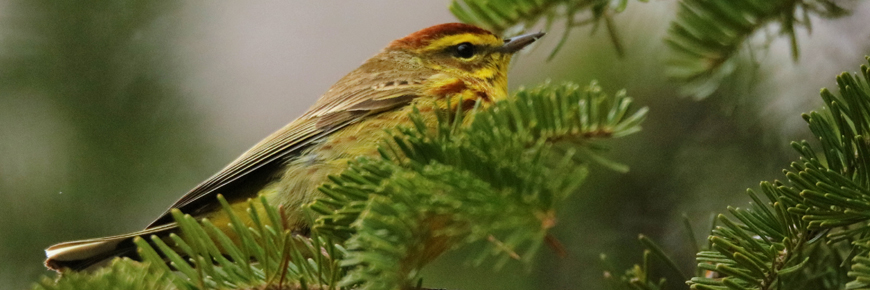
The northern Cape Breton ecosystem
Cape Breton Highlands National Park
What is an ecosystem?
An ecosystem is a dynamic system of plants, animals and non-living things (such as the bedrock, soil, and climate) which influence one another and depend on each other. The different components of an ecosystem are so interdependent that every part needs every other part to survive.
Where is the northern Cape Breton ecosystem?
The northern Cape Breton ecosystem covers the northern tip of Cape Breton Island from Lake Ainslie to Cape St. Lawrence. It is made up of three regions: the Acadian, the boreal, and the taiga, which could be considered smaller ecosystems within the northern Cape Breton ecosystem. It is a terrestrial ecosystem but all of its rivers eventually drain into the sea which is therefore affected by what happens on the land. In turn, the sea modifies the climate and the vegetation of the northern Cape Breton ecosystem.
The ecosystem is important for all of us
Since people first started living in Cape Breton, their livelihoods have been tied to the land and surrounding waters. The Mi'kmaq depended on the bounty of sea life, wildlife and wild plants for their food, clothes and homes. When Europeans first arrived, they fished the sea around the island. Later, they began to settle the land. Like the Mi'kmaq, they needed wood to build and heat their homes. Eventually they began to farm. Mines were opened and people drew minerals from the earth. Today many of us in Cape Breton earn our living by fishing, farming, or through tourism. Tourism also depends on the land: people flock to Cape Breton for its natural beauty as well as its unique culture.
Most of the electricity in Cape Breton is created by burning coal or by harnessing the energy of moving water and wind. The lumber for our homes and for the paper we use comes from the land. So does our food and drinking water. All of us depend on the bounty of our ecosystem.
We are part of the ecosystem
Humans are an important part of the ecosystem, and we depend on it to keep us healthy. It also depends on us. We are, in fact, a keystone species - a species which, by virtue of our nature and behaviour, has an effect on certain functions of the ecosystem that is disproportionate to our abundance within the ecosystem.
In some ecosystems, beavers are another keystone species, because it takes very few beavers to build dams, flooding large parts of the ecosystem. Thus they create wetlands, which benefit other water-loving species but force dry-land species out of habitat that they once lived in. This example shows us that not all changes are necessarily bad for all the components of an ecosystem.
Lakes and rivers of Cape Breton Highlands National Park
Fresh water is perhaps the single most important resource in the park because water quality affects all plants and animals, including humans. Seventeen major watersheds drain the park, traveling from small acidic lakes on the plateau, through gorges and canyons and down to the sea.
Soils and surficial deposits
Most plants need soil to grow and so in a way, soil is the raw material of the food chain. The soils in the park are mostly poor, thin and stony, easily stripped away by the passage of many feet.
Marine regions off Cape Breton Highlands National Park
The marine regions next to the park are important to the ecosystem, having a major effect on the climate. Tidal upwelling along the Laurentian channel supports a rich marine food chain, from microscopic plankton all the way up to whales.
Did you know?
Air pollution can cause respiratory diseases in people. It also harms plants such as lichens.
Water pollution can make people, fish and shellfish sick.
Toxins can cause growth problems and birth defects in people, plants and animals.
The way humans change the ecosystem is by removing or modifying parts of it. We have to be careful about the changes we make to the ecosystem because so many other species in our ecosystem could be affected by the things we do.
- How sensitive is the northern Cape Breton ecosystem to change? What sorts of changes do we cause?
- What should the ecosystem actually be like? How do we know how much we've changed the ecosystem? Can the ecosystem heal itself after we are finished in an area in which we have made changes?
- What is the park doing to help reduce ecosystem stressors?
- What can you do to help?
- Date modified :